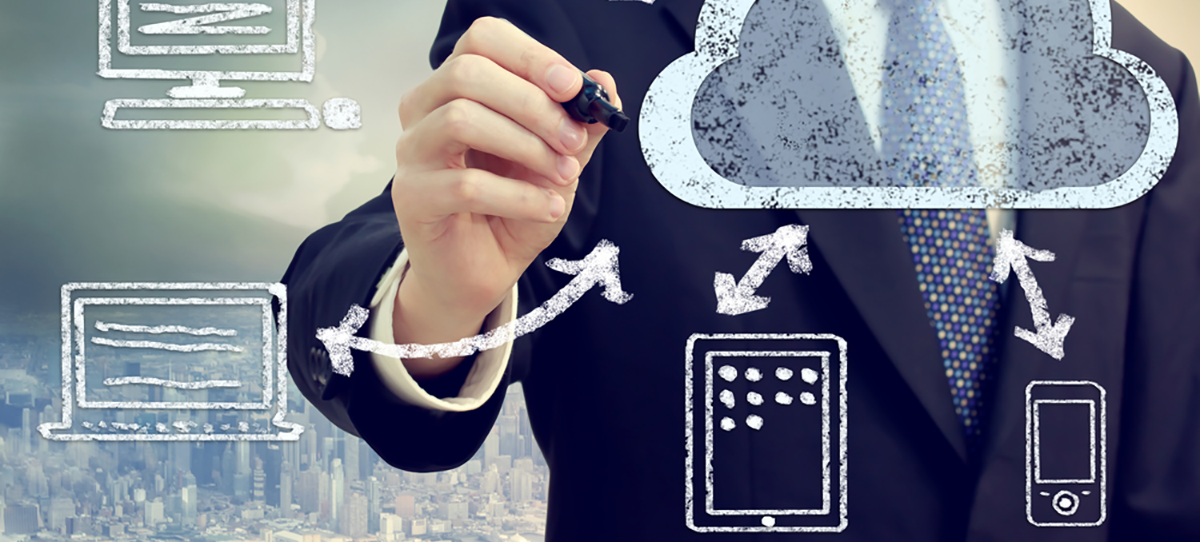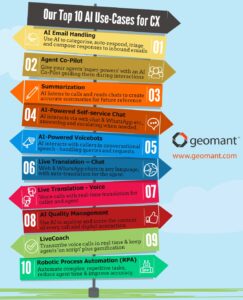Welcome to our ultimate guide to omnichannel customer service. The omnichannel approach means having a cross-channel strategy based on the simultaneous use of all available communication channels. Omnichannel moves the game on from simply providing additional digital channels to help you deliver an exceptional and seamless customer experience. You can either read the whole guide or jump to the section that interests you the most:
- What is omnichannel customer service?
- How does omnichannel differ from multichannel customer service?
- How we got here – the digital evolution of customer service
- What are the most common pain points for contact center managers looking to offer true omnichannel customer engagement?
-
What are the options available to you for achieving omnichannel status?
-
How to pick the partner that’s the best fit for your business
-
Onboarding your customer service teams for a sustainable omnichannel solution
-
Looking for more information on omnichannel customer service solutions for contact centers?
What is omnichannel customer service?

Omnichannel customer service means that a company offers people a seamless and comprehensive experience when they contact them. They can pick their communications channel of choice and interact with customer service or contact center agents across a single channel, or swap between multiple channels without the flow of information being interrupted.
There are several key elements that need to be in place in the contact center for this to happen:
- The agent needs all available information to ensure that they understand the context of the interaction – this is crucial.
- They should also have a comprehensive view of the customer journey to date.
- The contact center infrastructure should allow the customer to contact an agent via a variety of different communication channels to suit their preference, and the customer should be able to seamlessly transition between channels too.
96% of people say customer service is important in their choice of loyalty to a brand. (The Microsoft Customer Service Report 2017). Omnichannel means effortless customer interaction…
One of the main reasons that companies seek to adopt an omnichannel strategy is so that they can provide a consistent customer experience across every channel. Consistency in service level, even if they switch from one comms channel to another, is something that customers now demand. That means serving that need has become a driving force for those companies that want to remain competitive.
This blog examines the subject of omnichannel and consistent experiences in more detail.
How does omnichannel differ from multichannel customer service?
Multichannel customer service is a strategy which aims to quickly communicate or deliver information to the customer using as many individual communication channels as possible or as is needed. The channels are not joined up, as the multichannel approach favours a unique strategy for each separate communication channel.
As we’ve already noted above, an omnichannel approach means having a cross-channel strategy based on the simultaneous use of all available communication channels. Each channel is linked to another in such a way as to provide the greatest possible customer experience and context is provided when a customer moves from one channel to another. In this situation, the user has the freedom to use all communication channels the company offers and importantly, can easily switch between them.
Interested to learn more about multichannel versus omnichannel? This blog goes into more depth about the differences between the two and their implications on customer service.
Now that we know the differences between the two terms, it’s important to note that companies who engage their customers using an omnichannel customer service strategy experience a higher customer retention rate of up to 90%, compared to companies who prefer using the other option. And in a world where lead acquisition can be expensive, it’s really important to put emphasis on retaining customers.
How we got here – the digital evolution of customer service

There has been an enormous shift in the way people communicate with each other in their day-to-day lives. Millennials and Gen Z customers use social media, instant messaging and live chat to talk to family, friends and co-workers, and they expect to be able to use the same channels to speak to brands too. What’s more, they expect the customer service they receive on these channels to be consistent, fulfilling and available outside of traditional business hours.
The rise of new digital communications channels has challenged brands and made them rethink the way they support customers and attract new business. Some businesses have been slow to offer the latest digital channels as a way for their customers to get in touch or were ill-prepared to manage new channels effectively and were left offering a disjointed customer journey.
We now know that three things are crucial in planning customer service strategy in 2020 and beyond:
- Context is king to delivering great customer omnichannel service
- New (and unknown) digital communication channels will be just around the corner
- The rise of AI and bots will continue to influence the omnichannel contact center
What are the most common pain points for contact center managers looking to offer true omnichannel customer engagement?

Picking the latest channels to add
Companies are faced with the tricky task of predicting what their customers want and which channels they prefer to talk on. New technology moves quickly – WhatsApp was only founded in 2009, bought by Facebook in 2014 and 5 years on from that it is rapidly becoming an important customer engagement tool. For a while email was king, now SMS is back to cut through the email noise, enjoying incredible read rates!
You also need to consider the demographics of your customers, as that will influence the channels that they want to use. If your customers are younger, they are more likely to want to use chat and instant messenger tools, older people may prefer to still talk. It takes time and work to ensure the channels you offer are the right ones for your customers. We take a look at how companies can manage the unknown future of customer service in this blog and the impact uncertainty is having on them.
Adding new digital communications channels
Once you’ve chosen them, adding new channels can be difficult due to cost, time and complexity. It also represents a management challenge from a resourcing perspective, because very often contact centers will need agents with a different skill set to use text-based media channels as opposed to voice-based. However, there are ways to add extra functionality without disruption, and without having to rip out your existing system and start again. Read our helpful eBook – how to upscale your contact center without disruption – to find out more.
Managing new channels.
Just like call volumes, wait times and first contact resolution data from voice channels, any new digital channels will need to be monitored and managed carefully to ensure staff resources are deployed correctly. Contact center managers will need to ensure they have solid reporting tools, well thought-out KPIs and the right technology to display the new streams of real-time data that their agents will be generating. Here are 5 compelling reasons why your contact center needs real-time data in this helpful blog.
Of course, the way we communicate with each other and with the organizations and businesses around us has changed a lot over the past 20 years. All those new channels feeding into the contact center, such as social media, webchat, SMS and email, mean that the metrics we need to measure have changed as well. The KPIs that were once at the core of a slick call center are totally different now that a customer can leave a queue and initiate a live chat with an agent instead. Learn from a wallboard expert about how the ‘right’ contact center metrics have evolved over time.
What are the options available to you for achieving omnichannel status?
Connecting different communications channels like email, SMS, instant messenger and social media in one platform underpinned by a unified customer service strategy is one of the major steps in creating an omnichannel customer service machine. Let’s look at some of the ways to achieve this:
Buy new all-encompassing omnichannel contact center software
This first option is probably the most impractical when most contact centers already have systems in place and will want to leverage those rather than ripping and replacing. All the same, it is an option. There’s a wide range of providers that offer omnichannel contact center software but there are some things to consider.
Always ensure a platform has the following functionality:
- It supports all your communication channels from a single user interface for easy and efficient use by the agent
- Supports CRM integration for that all-important context.
- Has intelligent capabilities – i.e. workflow tools.
Upgrade your existing solution
If your existing contact center solution can support the latest communication channels, speak to your vendor about adding them. You can also consider adding third-party point solutions via integration but be sure that everything is tightly connected if you want to achieve true omnichannel.
Look to the cloud for easy integration of new channels
Omnichannel contact centers based in the cloud allow companies to add new communication channels to their digital customer service strategy at the point when they are ready to. Integration of the new channels (both now and in the future) with the existing ones and the removal of obsolete or unprofitable channels should be straightforward.
This means cloud-based solutions are ideal for proof of concept testing, allowing you to build a business case for new digital channels and test them live with voice still running as normal, with minimal setup. Many suppliers offer a free trial or the ability to roll out deployment on a staggered basis to see if there are any teething problems before going fully live.
Building on your existing Microsoft Teams platform
If you are already using the increasingly-popular and versatile Teams as your digital collaboration platform, you have the flexibility to add extra functionality easily.
Take Buzzeasy Contact Center for Teams, for example. This is a suite of tools that allows you to do away with a stand-alone VOIP contact center and separate social media messaging tools, live chat tools and bot creation tools, integrating everything into a single Microsoft UC architecture.
With contact center staff working on the same platform as the wider business, organizations have been able to benefit from a truly collaborative environment with front-line agents enjoying access to back office support.
Recording is another function that can easily be added to Teams, as you go. Those working in regulated industries, such as financial services, will need this to meet stringent compliance needs, but you may simply want a recording solution to enhance your quality and training programmes.
As we’ve already highlighted, it’s not just voice recording you need to consider these days. Multi and omnichannel customer experience strategies now offer customers the opportunity to speak to organizations via a range of options, and everything from instant chat to video can be captured with products like Geomant’s fully-hosted cloud-based Verint solution. Being cloud-based, of course, this solution also gives you the flexibility you need to add new capability and drop obsolete functionality when required.
How to pick the partner that’s the best fit for your business

The best partnerships are built on trust, so it is important to look for a provider who understands your business in a holistic sense, so not just from a technology perspective but from operational/service delivery perspective too.
Your chosen partner needs to work with you to ensure the technology they sell you is appropriate for your wider business, not just the latest channel that they are focusing on at that time. For example, if a company sells package holidays to over 65s, then they probably don’t need a WhatsApp solution and a good partner will understand this. A consideration of the future direction of the business and how its customer base might grow, and change is crucial in deciding on the right technology going forward. Asking to see use cases for their technology and case studies is essential to see how their approach changes based on the businesses they work with.
Read this case study about social housing provider Accent Housing and how they, with Geomant’s help, scaled up their contact center to improve efficiencies and enhance services to the customer.
Onboarding your customer service teams for a sustainable omnichannel solution
The positive impact of an omnichannel contact center solution should be felt by both customers and your agents. The technology you implement should be viewed as an enabler, allowing the all-important seamless handoff between channels and providing context to agents at the key moment.
Getting full agent buy-in is crucial, so training on the new technology should be well thought-out and should be done in manageable chunks. It’s important not to overwhelm agents and give them time to absorb new information and ask questions for themselves.
Also, depending on how you choose to structure your omnichannel contact center, you might need to consider training agents to be multi-skilled. In the omnichannel contact center dynamic it is highly beneficial to have agents that can manage both digital interactions and voice calls. Of course, there is the option to use skills-based routing and direct the traffic to a dedicated team with all the information available – but it’s an added bonus to the customer if they get to speak to the same agent, so it’s worth thinking about.
How to get the most out of your omnichannel platform

Once you have installed an omnichannel contact center solution, it’s worth taking some time to ensure you’re able to get the most out of it. Here are three things to consider:
1. Dig down on the metrics for business benefit
On the basis that you will choose to enable digital channels from the cloud, it is worth identifying the channel from which you feel you would derive the most business benefit, build a business case based on a proof of concept, capture feedback internally and externally and if positive, implement in production.
2. Keep software up to date
There are lots of good reasons why upgrading your contact center software is important, including the fact that it will ensure you stay up to date with customer expectations. New releases will include new features and functionality that help your efficiency and help you deliver customer service on the latest digital channels. Learn more about contact center software upgrades in our helpful blog.
3. People, processes and tools
Even the most sophisticated omnichannel contact center is nothing without the right people following set processes. Supporting tools, such as wallboards and reporting solutions are key to the effective delivery and management of the omnichannel customer service.
What’s next for contact center customer service?
An overview of the future state of the contact center
The face of the contact center has changed dramatically over the past 15 years, in line with the rise of new digital communications channels. Geomant’s product team, industry experts working at the front line of the latest end user and reseller solution developments, share their thoughts on what a contact center might evolve into in the short, medium and long-term.
AI and machine learning
AI and machine learning continue to transform industries as diverse as farming and healthcare, so it’s no surprise that applications of AI in customer service continue to grow. Gustavo Perez, Head of Geomant’s AI practice, has taken a look at the latest and greatest applications of AI in customer service.
Chatbots AI & machine learning will continue to be integrated into all contact center processes. In the same way that speech based IVR has now gained acceptance, AI and machine learning will naturally automate interactions via digital channels. However, Geomant believes that there will always be a need for human interaction. In order to build and maintain positive customer experiences in the contact center, it’s essential to ensure there is a path from the digital channel to an agent. This ensures that if a complex query is raised with an AI solution, there is an agent ready to take over when needed. This blog takes a closer look at the subject of human interaction in the contact center.
New digital channels
In a digital world, it’s impossible to know exactly what is around the corner. A great example of this is the rise of WhatsApp to become one of our most-loved communication channels. WhatsApp was launched in August 2009 and, in the 11 years since then, has been purchased by Facebook and become a daily feature of many of our lives.
WhatsApp is used by over 2 billion users in 180 countries and in the UK it’s a key communication tool for millennials and Generation Z. 92% of 18-24-year-olds and 93% of 25-34-year-olds use the tool to communicate with friends, family and, crucially, businesses. Enabling customers to get in touch with your brand in the way that they’re most comfortable with is key to a positive customer experience, so it’s worth exploring WhatsApp as a customer engagement tool.
Interested in finding out more about managing inbound WhatsApp messages and utilizing it as a customer interaction tool? Take a look at our blog, which lists 10 reasons why WhatsApp is a channel to pay attention to if you’re keen to offer it.
Looking for more information on omnichannel customer service solutions for contact centers?
Our expert team is on hand to help guide you through the omnichannel contact center. Whether you’re looking to add Geomant solutions to your sales portfolio or are an end user looking for a contact center solution for your business or organization, why not get in touch?











